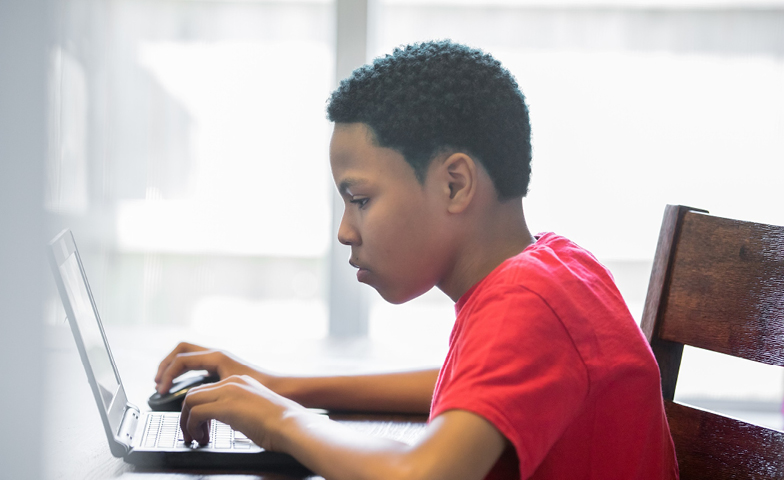Supporting students’ need for social interaction while physically distancing
When asked about social distancing, Peter Slavin, president of Massachusetts General Hospital, put into words a thought I keep having: “I prefer the term ‘physical distancing,’ it seems we need social connections now more than ever before.” For middle schoolers, with the developmental desire to fit in and seek connection with each other, this statement is even more prophetic than for adults.
The need to maintain academic instruction and to be socially connected collide when considering how we help our students connect when they cannot see each other in person. How we do this will probably change shape over the coming days, but we are aided by seeking the bright side and considering what we know of many students in the middle grades.
Middle schoolers see themselves in relation to others. As they try to understand and define themselves, many do so while comparing and contrasting themselves with others. COVID-19 provides a leveling of experiences as it impacts everyone, albeit in different ways.
Middle schoolers pick up on and respond to the expressed and unexpressed emotions surrounding them. A teacher once described to me, “middle schoolers all seem to be attentionally challenged.” I can see how that may seem right. Still, I believe, middle schoolers are not attentively challenged, I think they’re overly attentive, seeing everything, sensing the feelings of others, and driven by a desire to connect with others. I find them to be the most authentic group of people letting you know verbally or by action how they are feeling and how they experience you.
As we advance further into our time of physically distancing, the feelings of those around our middle schoolers may become more tense, anxious, and irritable, mirroring what they are experiencing. Among my favorite ways to understand how my students are doing is to ask, “What do you think adults should know about how some students your age might be feeling right now?” And “If you were to design a workshop for parents and teachers about how to best support students, what would you want them to hear?”
One of the most essential parts of a middle schooler’s day is the “times and spaces in between” meaning the times between classes and the spaces outside of the classroom. These times and spaces provide the connective tissue between classes and a chance to check-in, touch base, get information, and more. In fact, I once had a student tell me his relationship “began on Monday, ended on Friday, and was really intense in between” all of this while not seeing each other outside of school.
Remote learning and teaching through packets do not necessarily allow for these interactions, but scheduling this unstructured time is possible. Those teaching remotely might try starting class with mics unmuted, allowing the chatter when arriving at class, beginning with a game allowing students to “play together,” or scheduling a hangout.
My students are coming back from spring break this week and for our first class will begin with a Google doc with the prompt “Please answer one or more of the following ‘How are you?’,’ How are those you care about?’ ‘How do you imagine others your age are feeling?’” and then we will play One Thing (one thing I noticed, one thing I heard, one thing I missed, one thing I ate, one thing wondered and so on) and for each class afterward, I am going to ask students to take turns creating a five-minute game for the group to play.
I began this piece with the intent to provide you with a list of things you can do to support students, but as I write it, I am reminded that the best answers about what kids need come from kids. The question, “How do we help students connect socially when they cannot see each other?” is not for us to answer; it’s for us to pose to our students. We can ask our students to help solve a riddle perplexing most adults, co-constructing answers with them, and, most of all, listening.
My homework prompt, which can be done by remote learning, email, or phone calls, will be “Many adults are anxious to get things done, to teach you, to ensure you are learning, and I know that the brain is particularly challenged to take in new information when stressed. Adults often underestimate how important it is for students to maintain a connection with each other, so let’s work together to generate a list of ideas for parents and teachers to read for ways they can support you to socially connect while physically isolating.”
To process this question, we will have norms for how we collect each other’s ideas, including listening for learning rather than debate, asking questions rather than disregarding opinions, and building on each other’s thoughts rather than taking over. Students may not be able to answer the question for all, but in asking and listening, we are seeing and hearing them, which, after all, is the most robust social connection we can make.
